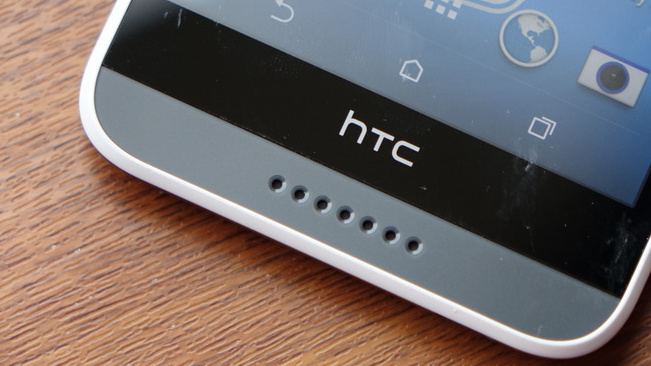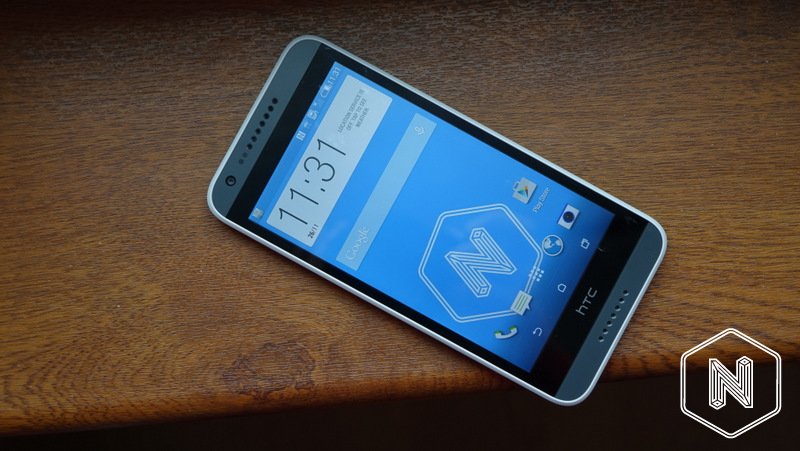HTC Desire 620: 5"-Smartphone mit IPS-Display und 64-Bit-SoC

HTCs Desire-Serie könnte ab Januar um einen neuen Ableger bereichert werden. Dies geht aus einem Artikel der bulgarischen Seite nixanbal hervor. Demnach setzt das neue HTC Desire 620 auf ein Fünf-Zoll-Display und wird von einem 64 Bit System-on-a-Chip betrieben.
Der inzwischen nur noch über Googles Web-Cache erreichbare Artikel spricht weiter von einem mit 1,2 Gigahertz getakteten Snapdragon 410 aus dem Hause Qualcomm. Hinsichtlich der weiteren Eigenschaften lehnt sich der neue Spross an die Vorgängermodelle Desire 616 und Desire 610 an. So kommt erneut ein in der Diagonale fünf Zoll messendes IPS-Display, mit einer Auflösung von 720 × 1.280 Bildpunkten zum Einsatz. Auch der ein Gigabyte große Arbeitsspeicher findet sich wieder. Die Kunststoffrückseite ist abnehmbar und gewährt so das Wechseln des mit einer Nennladung von 2.100 mAh bezifferten Akkus. Ebenfalls rückseitig befindet sich die mit acht Megapixeln auflösende Hauptkamera sowie ein LED-Blitz.
-
 HTC Desire 620 (Bild: Nixanbal)
HTC Desire 620 (Bild: Nixanbal)
Durch die relativ großen Lautsprecheröffnungen ist das neue Desire 620 im Vergleich zum HTC One (M8) sogar höher als sein großer Bruder. Weitere Details, wie etwa eine mögliche LTE-Unterstützung, bleiben unklar. Fragen wirft zudem das verwendete Betriebssystem auf: So soll das HTC Desire 620 noch auf Android in der Version 4.4.4 setzen. Eine offizielle Ankündigung seitens HTC blieb bislang aus.
| HTC Desire 620 | HTC Desire 616 | HTC Desire 610 | HTC One (M8) | |
|---|---|---|---|---|
| Software: (bei Erscheinen) |
Android 4.4 | Android 4.2 | Android 4.4 | |
| Display: | 5,00 Zoll, 720 × 1.280 294 ppi IPS |
4,70 Zoll, 540 × 960 234 ppi |
5,00 Zoll, 1.080 × 1.920 441 ppi S-LCD, Gorilla Glass 3 |
|
| Bedienung: | Touch | Touch, Status-LED | Touch | Touch, Status-LED |
| SoC: | Qualcomm Snapdragon 410 4 × Cortex-A53, 1,20 GHz 28 nm, 64-Bit |
MediaTek MT6592 8 × Cortex-A7, 1,70 GHz 28 nm, 32-Bit |
Qualcomm Snapdragon 400 4 × Cortex-A7, 1,20 GHz 28 nm, 32-Bit |
Qualcomm Snapdragon 801 4 × Krait 400, 2,30 GHz 28 nm, 32-Bit |
| GPU: | Adreno 306 | Mali-450 MP 700 MHz |
Adreno 305 450 MHz |
Adreno 330 578 MHz |
| RAM: | 1.024 MB LPDDR3 |
1.024 MB LPDDR2 |
2.048 MB LPDDR3 |
|
| Speicher: | 8 GB (erweiterbar) | 4 GB (erweiterbar) | 8 GB (erweiterbar) | 16 GB (erweiterbar) |
| 1. Kamera: | 8,0 MP, 1080p LED, f/2,40, AF |
8,0 MP, 1080p LED, AF |
8,0 MP, 1080p LED, f/2,40, AF |
4,0 MP, 1080p Dual-LED, f/2,00, AF |
| 2. Kamera: | Nein | |||
| 3. Kamera: | Nein | |||
| 4. Kamera: | Nein | |||
| 5. Kamera: | Nein | |||
| 1. Frontkamera: | 5,0 MP, 1080p AF |
2,0 MP AF |
1,3 MP, 720p AF |
5,0 MP, 1080p AF |
| 2. Frontkamera: | Nein | |||
| GSM: | GPRS + EDGE | |||
| UMTS: | HSPA+ ↓42,2 ↑5,76 Mbit/s |
HSPA+ ↓21,6 ↑5,76 Mbit/s |
HSPA+ ↓42,2 ↑5,76 Mbit/s |
|
| LTE: | Advanced ↓150 ↑50 Mbit/s |
Nein | Ja ↓100 ↑50 Mbit/s |
Advanced ↓150 ↑50 Mbit/s |
| 5G: | Nein | |||
| WLAN: | 802.11 b/g/n Wi-Fi Direct, Miracast |
802.11 b/g/n | 802.11 a/b/g/n/ac Wi-Fi Direct, Miracast |
|
| Bluetooth: | 4.0 | 4.0 LE | ||
| Ortung: | A-GPS, GLONASS | |||
| Weitere Standards: | Micro-USB 2.0, NFC | Micro-USB 2.0 | Micro-USB 2.0, MHL, NFC, Infrarot | |
| SIM-Karte: | Micro-SIM | – | Nano-SIM | Nano-SIM Variante Nano-SIM, Dual-SIM |
| Akku: | 2.100 mAh austauschbar |
? | 2.040 mAh fest verbaut |
2.600 mAh (9,88 Wh) fest verbaut |
| Größe (B×H×T): | 72,7 × 150,1 × 9,60 mm | 71,9 × 142,0 × 9,10 mm | 70,5 × 143,1 × 9,60 mm | 70,6 × 146,4 × 9,35 mm |
| Schutzart: | – | |||
| Gewicht: | 145 g | 150 g | 144 g | 160 g |
| Preis: | 279 € | – | 299 € | 679 € |
